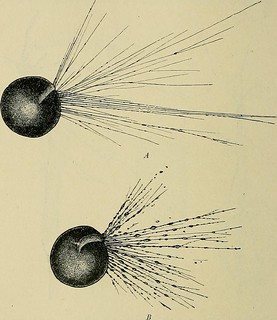- External URL
- Creation
-
Creator (Definite): Olaf BreidbachDate: 1996
- Current Holder(s)
-
- No links match your filters. Clear Filters
-
Cited by
 Henri Bergson's Physiological Psychology: Vitalism and Organicism at the Start of the Twentieth Century
Henri Bergson's Physiological Psychology: Vitalism and Organicism at the Start of the Twentieth Century
Description:'As Robert Brain notes, Haeckel's contention that that protoplasm 'had the ability to receive and maintain the waveform vibrations of the external world' and thereby pass on organic characteristics from one generation to the next achieved great prominence during the late nineteenth and early twentieth centuries. Haeckel further argued that a protoplasmic capacity for the reception and storage of wave-forms endowed cells with psychological capacity. Well into the twentieth century, histologists such as Camillo Golgi, Hans Held, Stephan Apáthy and Albrecht Bethe presented evidence that nerves could link together via continuously connecting organic structures.'
-
Cited by
 T. Quick, 'Disciplining Physiological Psychology: Cinematographs as Epistemic Devices, 1897-1922', Science in Context 30 (4), pp. 423-474.
T. Quick, 'Disciplining Physiological Psychology: Cinematographs as Epistemic Devices, 1897-1922', Science in Context 30 (4), pp. 423-474.
Description:'In 1869 Thomas Henry Huxley had prominently declared protoplasm the 'physical basis of life'. First propounded by Max Schultze in 1860, it had been Haeckel who presented the most influential discussion of its relevance to psychology. As Brain notes, Haeckel's contention that that protoplasm 'had the ability to receive and maintain the waveform vibrations of the external world' and thereby pass on organic characteristics from one generation to the next achieved great prominence during the late nineteenth and early twentieth centuries. Haeckel further argued that a protoplasmic capacity for the reception and storage of wave-forms endowed cells with a psychological capacity (Brain 2009, on 94-95 and 101-104). Well into the twentieth century, histologists such as Camillo Golgi, Hans Held, Stephan Apáthy and Albrecht Bethe presented evidence that nerves could link together via continuously connecting organic structures (Breidbach 1996, 200-201). A significant strand of late-nineteenth-century physiological psychology thereby identified the variability of nervous excitation not with the properties of individual cells as such, but with the vital and extensible properties of the protoplasm common to them all.'
Relevant passage from Breidbach:
'Camillo Golgi, who was later to receive the Nobel proze for his histological inventions, thought that his stain showed a syncytium of fused nervous fibres. [note: '26 C. Golgi, 'Über den feineren bau des Rüchenmarks', Anatomischer Anzeiger, 5 (1890), 372-398; 423-435.'] Ramon y Cajal, [note: 'S. Ramon y Cajal, Neuron Theory or Reticular Theory? Objective Evidence of the Anatomical Unity of Nerve Cells, Madrid: Consejo Superior de Investigaciones Cientificas Instituto 'Ramon y Cajal', 1954'] however, interpreted the Golgi preparations. which seemed to demonstrate the adherence of the nervous fibres, as as artefacts due to improper fixation and incorrect staining procedures. In his extensive comparative approach, he succeeded in identifying certain nerve cell types in vertebrate and invertebrate brains. [note: 'S. Ramon y Cajal, Les nouvelles idées sur la structure de système nerveux chez l'homme et chez les vertébrés, Paris: Bienwald, 1895; S. Ramon y Cajal, Histologie du systeme nerveux de l'Homme et des Vertèbres. Edition Française. Transi, à L. Azoulay, Vol. 1, Madrid: Con. Sùper. de Invest. Cien. Instituto Ramon y Cajal, 1972.'] Consequently, he thought the nervous tissue was constituted by distinct and apparently unfused nerve cells. This opinion was shared by scientists such as Van Gehuchten. His and Kenyon. [note: 'O. Breidbach (footnote 13).']
Bethe, and, especially, H. Held, saw the Golgi procedure as an unreliable staining technique. They argued that this procedure destroys the smaller nerve fibres which they were able to detect in their reduced silver preparations. [note: 'H. Held, 'Beitrage zur Struktur der Nervenzellen und ihrer Fortsàtze', Archiv fiir Anatomie und Entwicklungsgeschichte (1897), 204-294.'] At this point, reticularists like Bethe, Held and Apáthy who regarded the nervous system as a syncytium, did not question the former results of Forel and His. [note; 'A. Bethe, 'Die historische Entwicklung der Ganglienzellhypothese', Ergebnisse der Physiologie, 3 (1904), 195-213.'] They admitted that the nervous tissue is initially formed by discrete cells. Held explicitly refers to the embryological studies of His. [note: 'H. Held (footnote 1.)'] However, based on their observation of the adult tissue, they concluded that the primarily discrete nerve cells fuse secondarily during development and form a syncytium.' (200-201)







